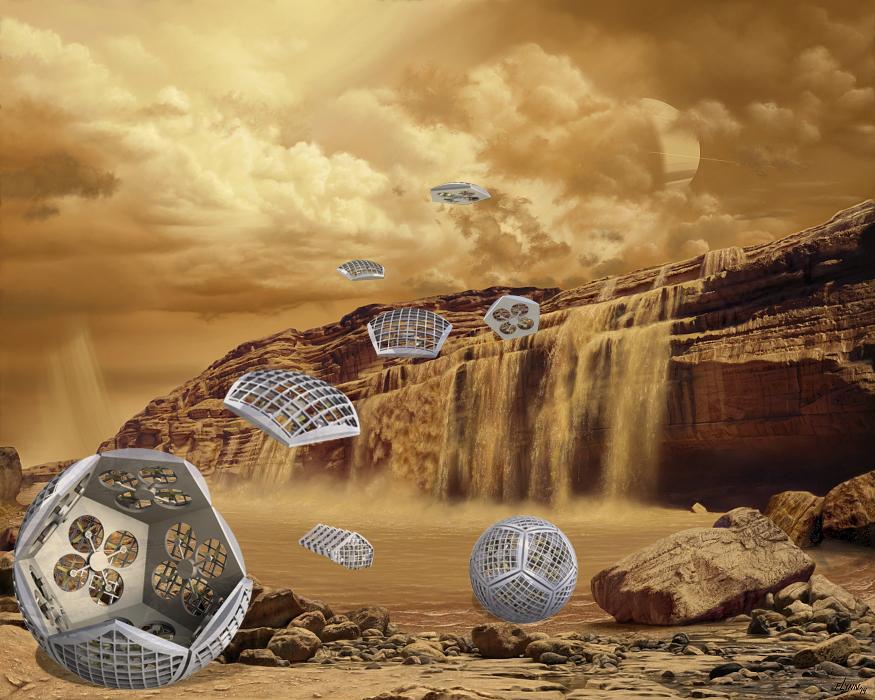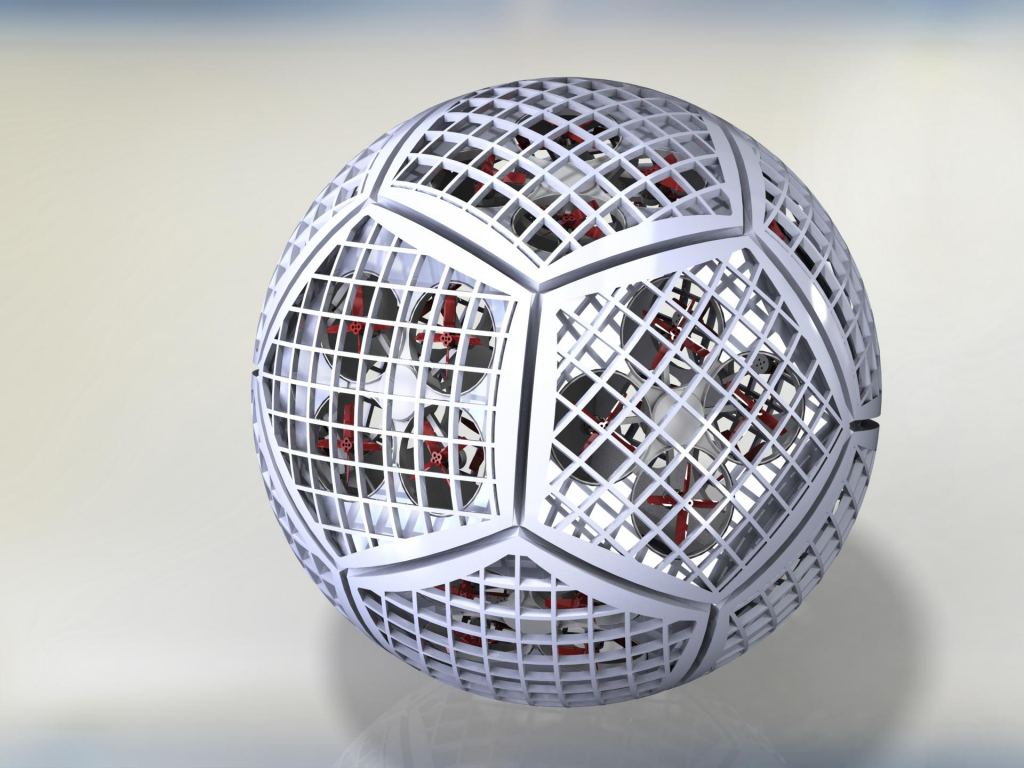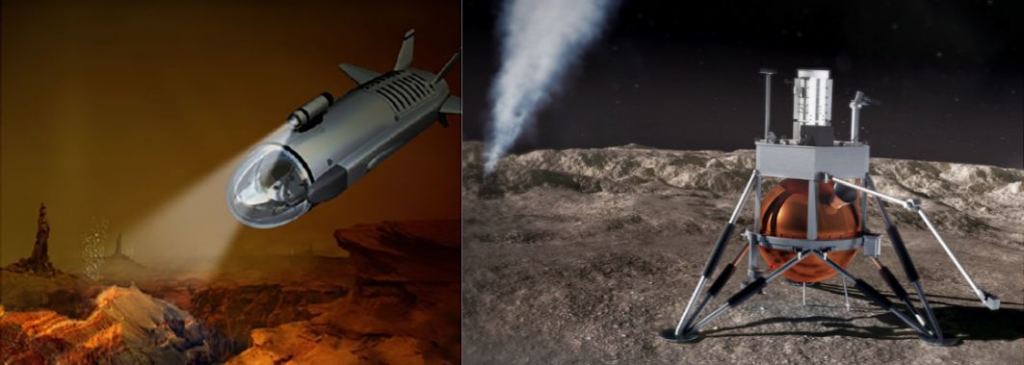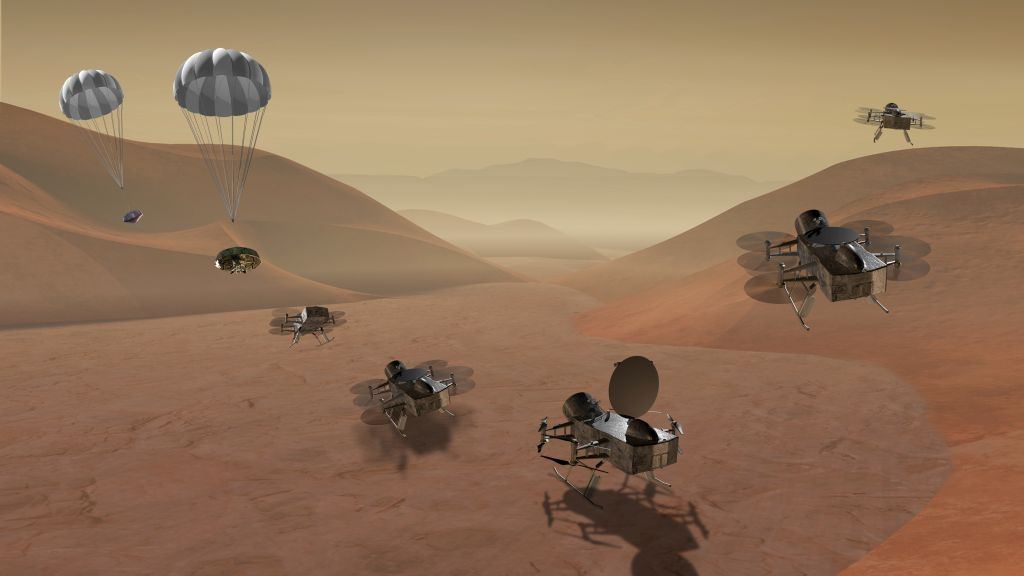When it comes to space exploration, it's robots that do most of the work. That trend will continue as we send missions onto the surfaces of worlds further and further into the Solar System. But for robots to be effective in the challenging environments we need to explore—like Saturn's moon Titan—we need more capable robots.
A new robot NASA is developing could be the next step in robotic exploration.
Saturn's moon Titan is on any planetary scientist's list of potential targets for exploration. But any mission to Titan will have to contend with an environment unlike any other: frigid temperatures, cryovolcanoes, caves, and lakes and seas—and rain—of liquid hydrocarbons. In that environment, an MSL Curiosity-style rover would struggle.
NASA, always an agency that looks to the future, is working on something that could meet Titan's challenges: a shape-shifting robot made up of multiple smaller robots that can self-assemble.
In a pique of practicality, they're calling it Shapeshifter.
Shapeshifter isn't one robot, but several. They're calling them 'cobots' and the individual cobots can fly, roll on the ground, and swim while submerged. This makes Shapeshifter well-suited to explore Titan, the only other world in the Solar System with liquid on its surface.
Robotics Technologist Ali Agha is JPL's Principal Investigator for Shapeshifter. In a press release he said, "We have very limited information about the composition of the surface Rocky terrain, methane lakes, cryovolcanoes - we potentially have all of these, but we don't know for certain. So we thought about how to create a system that is versatile and capable of traversing different types of terrain but also compact enough to launch on a rocket."
The team behind Shapeshifter includes researchers from Stanford and Cornell universities. When they developed the concept of a self-assembling robot made of smaller robots, they named them "cobots." When the individual cobots join into one, the prototype rolls along on the surface like a kind of huge hamster wheel. When the mission calls for it, the individual cobots can separate from the whole, and fly or swim to their targets. At least that's how it's envisioned in this early, 3D printed prototype being tested at JPL.
The version of Shapeshifter being tested right now is semi-autonomous, but if the idea comes to fruition, it will need to self-assemble autonomously, without waiting for individual instructions from Earth. With advances in AI and robotics, that's probably just around the corner.
Shapeshifter is being developed under the NASA Innovative Advanced Concepts (NIAC) program. NIAC provides phased funding to advanced, visionary concepts, to take futuristic ideas and nurture them toward practicality. NIAC is behind the Titan Submarine, the Triton Hopper, and other projects.
Though Shapeshifter is just a 3D-printed conceptual machine right now, it's a clear indication of the direction that robotic exploration is taking. There's versatility in this approach which is well-suited to exploring distant places like Titan. Alongside this multi-bot versatility is the possibility of a type of built-in redundancy: if one cobot is malfunctioning or inoperable for some reason, it won't necessarily threaten the entirety of the mission.
Shapeshifter wouldn't be alone on Titan. It would be part of a larger mission design that includes a mothership. The mothership would be on the surface and could serve as an energy source for Shapeshifter. Since Titan's atmosphere is so dense and hazy, and it's so far from the Sun, a mission to Titan would likely be powered by a radioisotope thermal generator (RTG.) The small cobots would likely be battery-powered, and would recharge themselves with an RTG carried on the mothership.
But the smaller cobots would also support the mothership. Since Titan's atmosphere is so dense, flight is easier than here on Earth. Principal Investigator Ali Agha says that cobots would be able to work together to lift the mothership and transport it to new locations. That would only contribute to Shapeshifter's versatility.
"It is often the case that some of the hardest places to get to are the most scientifically interesting because maybe they're the youngest, or they're in an area that was not well characterized from orbit," said Jason Hofgartner, JPL lead scientist for Shapeshifter. "Shapeshifter's remarkable versatility enables access to all of these scientifically compelling places."
Agha calculates that 10 cobots could easily lift a lander the size of Huygens (roughly 9 feet, or 3 meters, wide) and gently carry it to different locations.
NASA has already announced a mission to Titan with its Dragonfly rotorcraft. Dragonfly can't swim, but it can fly to different locations and take airborne measurements, as well as conduct surface operations. That type of versatility is ideal for exploring Titan, and Shapeshifter is even more versatile.
It's too soon to say if Shapeshifter or something like it will be the next planned mission to Titan. But it won't be surprising if one day, a robot that's descended from Shapeshifter makes its way around Titan by flying, rolling, and swimming.
 Universe Today
Universe Today




